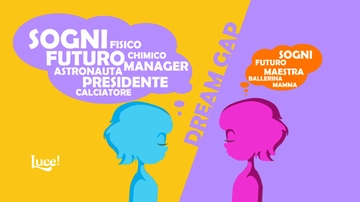Fewer narcotics, but more psychotropic drugs (without a prescription): what the data on substance use among young people tell us

Drug use among young people is decreasing, but the use of non-prescription psychotropic drugs has reached record levels. And unlike practically all other substances, they are taken mostly by girls . These are the data that emerged from the Parliament's Annual Report on the phenomenon of drug addiction in Italy , concerning 2024, drawn up by the Department for Anti-Drug Policies of the Presidency of the Council.
Substance use among young peopleAccording to the data provided by the document, there has been a slight decline in drug use among young people, although use remains widespread: almost 910,000 students between the ages of 15 and 19 - or approximately 37% of the student population - have used an illegal psychoactive substance at least once, and 620,000 (25%) have done so in the last year. This number is slightly down compared to the previous two years. However, early use remains high: over a third of students have tried cannabis before the age of 14. The most widespread substance remains cannabis (21%), followed by NPS (New Psychoactive Substances, 5.8%), synthetic cannabinoids (3.5%), stimulants (2.4%), cocaine (1.8%), hallucinogens (1.2%) and opiates (1.2%).
Added to these data are non-prescription psychotropic drugs, whose use has reached record levels: over 510,000 students between the ages of 15 and 19 have used them at least once in their lives, and 180,000 underage students (12%) have used them in the last year alone. This is a type of use that - unlike other substances - is more widespread among girls than among their peers.
Possible reasonsThere could be many reasons behind the widespread use of non-prescribed psychotropic drugs among young people. Recent years have seen an increase in anxiety, depression, school stress and mood disorders among adolescents, exacerbated by global events such as the pandemic. According to data collected by the Italian Childhood and Adolescence Authority (Agia), 51.4% of young people recurrently suffer from prolonged states of anxiety or sadness. 24% are anxious and 16% cannot define their mood.
Many of them may resort to psychotropic drugs as self-therapy to manage these symptoms, often without the support or supervision of a doctor . Also because the diagnosis of this type of disorder is not simple, since some symptoms (such as nervousness, sweating, crying, difficulty in relationships and decline in school performance) can be confused with the normal difficulties of adolescence or underestimated by family and school. In addition, early diagnosis is often hindered by stigma , lack of information and difficulty in accessing mental health services. Psychotropic drugs (anxiolytics, sedatives, antidepressants) can be easily found in the family environment, stolen from medicine cabinets or obtained from peers. Unlike illegal drugs, they are often perceived as "safe" or "less dangerous", because they are associated with medical use.
Gender differences in psychotropic drug abuseGirls, more frequently than boys, report a greater need for emotional control , weight, academic performance or relationships. According to the latest AlmaDiploma report, girls recognize anxiety as a dominant emotion in school much more than their peers (+20%). It has been shown that girls tend to develop internalizing disorders (anxiety, depression) more than their male peers: a British study of over 17,000 children found that the trajectories of these disorders increase significantly in girls during adolescence , while in boys they tend to stabilize or regress. The reason for this difference is a combination of neurobiological, hormonal and psychological factors , and a different exposure to social stressors due to a different gender role.
What solutions?To address the growing use of non-prescribed psychotropic drugs and the broader psychological distress of younger generations, a structural investment in mental health education is needed, starting from middle school: introducing emotional literacy, stress management and drug awareness courses can help students recognize their moods and ask for help correctly. And students - according to data from Almadiploma - would be ready to welcome this type of topic in class: 56% of them said they were interested in talking about psychological well-being and 51% about stress management and change. Here too, there is a gender difference: almost 20% more girls are in favor than their peers.
A central role should also be given to school psychological help desks , which should be made stable, accessible and well communicated. If the measures taken after the pandemic had helped the spread of this type of service, which had come to cover almost 70% of Italian schools . However, over the last few years the number has collapsed to about 2,500-3,000 help desks, about half.
To address the situation, the 2025 Budget Law established for the first time a National Fund for the psychological support service in schools : 10 million euros for 2025 and 18.5 million annually from 2026. This represents an important turning point: school psychology becomes a structural component of the educational system, no longer linked only to temporary projects or local initiatives. An important first step, which however requires continuity.
Luce








